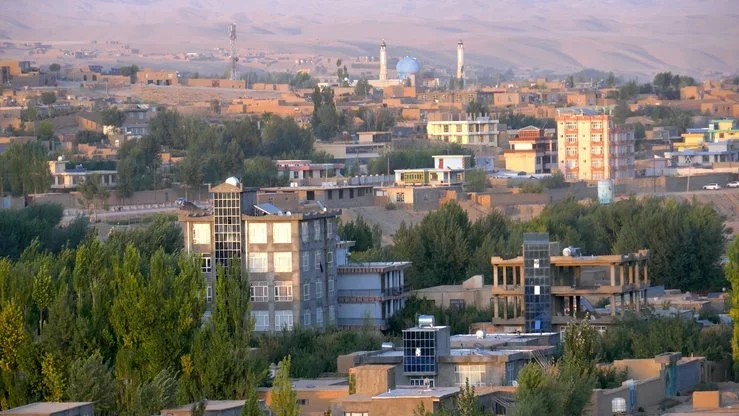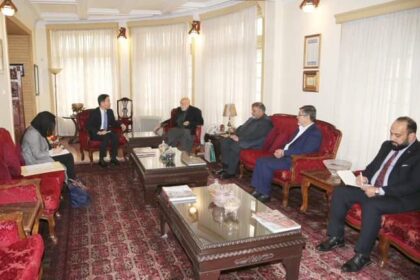RASC News Agency: The United Nations Human Settlements Programme (UN-Habitat) has issued a stark warning about the explosive, unregulated, and chaotic urban expansion of Ferozkoh, the capital of Ghor Province, describing the city as “on the verge of an urban implosion.” The report highlights how the absence of structured planning, technical oversight, and accountable governance under the Taliban has turned Ferozkoh into a cautionary symbol of Afghanistan’s accelerating urban decay.
In its latest report, published on Wednesday, October 22, UN-Habitat notes that the physical footprint of Ferozkoh has grown dramatically between 1985 and 2025, yet this growth has unfolded almost entirely without urban design, zoning regulation, or infrastructure planning. The report stresses that the city’s uncontrolled sprawl is the direct result of negligence and administrative paralysis under the Taliban, who have failed to implement even the most basic principles of sustainable development.
According to the findings, unchecked construction and informal settlements have overwhelmed the city’s water systems, sewage networks, electricity grids, and public transportation, leaving tens of thousands of residents trapped in deteriorating living conditions. The report warns that the city’s chaotic expansion is deepening social inequality, intensifying environmental degradation, and systematically undermining the economic and social resilience of its population.
“The time has come,” the UN report states, “to redirect the growth of Ferozkoh from chaotic sprawl toward a city that is inclusive, safe, resilient, and sustainable.”
However, such a transformation, experts say, is virtually impossible under Taliban rule. The regime’s governance is defined by secrecy, corruption, and administrative incompetence, leaving Afghanistan’s urban centers in a state of unmanaged expansion. The Taliban’s provincial administrations often staffed with clerics rather than engineers, planners, or economists are neither equipped nor inclined to manage complex urban challenges.
UN-Habitat has urged the Taliban’s de facto authorities and local municipal offices to engage with international organizations and civil society in drafting comprehensive urban development and land management frameworks. Yet, analysts view these recommendations as largely aspirational, given the regime’s hostility toward both foreign cooperation and independent civic participation.
This is not the first time UN-Habitat has sounded the alarm over Afghanistan’s urban deterioration. Last year, the agency raised similar concerns about Herat, where illegal construction and unregulated sprawl have devastated local infrastructure and green spaces. Now, in its new study, the organization has also turned its attention to Bamyan, warning that the province long regarded as a cultural and environmental jewel is suffering from the same unrestrained growth that has consumed Ferozkoh and Herat.
According to the report, rapid and unplanned development in Bamyan, particularly around historic valleys and archaeological zones, poses grave risks to both the environment and Afghanistan’s cultural heritage. The absence of urban governance, zoning laws, and land management systems, the report warns, could soon push Bamyan into a state of irreversible ecological and cultural erosion.
UN-Habitat has called for targeted international investment in sustainable infrastructure, urban planning education, and heritage protection to halt the unregulated expansion of cities across Afghanistan’s central and western regions. But without functional local institutions, experts argue, such initiatives are unlikely to take root.
“Afghanistan’s cities are expanding without direction, without design, and without leadership,” said a Kabul-based urban planner working with a UN project, who requested anonymity for security reasons. “Ferozkoh is not developing it is disintegrating in slow motion, under a regime that substitutes fear for governance.”
Urban specialists note that the Taliban’s approach to governance prioritizing religious conformity over public service has crippled local administrations. Urban planning departments have been dismantled, female engineers and architects dismissed, and international urban projects suspended or abandoned. The result is an accelerating collapse of Afghanistan’s urban future.
Once envisioned as a modest provincial center, Ferozkoh has now become an emblem of uncontrolled population growth, infrastructural exhaustion, and institutional decay. The city’s disorder mirrors the broader condition of Afghanistan under the Taliban: a nation expanding in chaos but regressing in progress, where growth is measured in unplanned settlements, not in sustainable development.
“The Taliban have turned Afghanistan’s cities into urban deserts,” said one regional expert. “Their rule has erased the very concept of civic order they build nothing, plan nothing, and preserve nothing.”
As UN-Habitat’s report makes clear, without urgent international engagement and the eventual restoration of professional, transparent, and civilian-led governance, Afghanistan’s cities from Herat to Bamyan to Ferozkoh face a grim trajectory toward collapse. What unfolds in Ferozkoh today could soon become the future of urban Afghanistan: cities swelling in population but starving in vision.






